If you don’t bleed the master cylinder, air may become trapped in the brake system, which can cause brake failure or poor brake performance. When you press the brake pedal, the brake fluid in the master cylinder is pressurized and forced through the brake lines to the brake calipers or wheel cylinders.
If there is air in the brake lines, the brake pedal may feel spongy or go all the way to the floor because the air is compressible and cannot effectively transmit the pressure from the brake pedal to the brakes. This can result in longer stopping distances and reduced brake effectiveness.
Bleeding the master cylinder involves removing the air from the brake system by using a special tool to open the bleeder valve on each brake caliper or wheel cylinder and allowing the brake fluid to flow out until it is free of air bubbles.
This process should be performed anytime the brake system has been opened, such as when replacing the master cylinder or when changing the brake pads. Failure to bleed the master cylinder can lead to brake failure or reduced brake performance.
It is important to follow the manufacturer’s instructions when bleeding the brakes to ensure that the process is done correctly and safely.
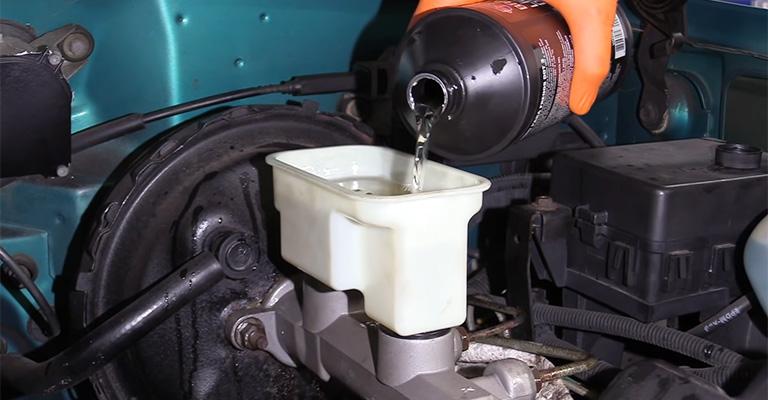
Contents
Here Is What Happens If You Don’t Bleed The Master Cylinder
Whenever brake fluid has been drained from the reservoir, or if the master cylinder has been removed or is new, all air must be pushed out of the cylinder by brake fluid. You should not drive your vehicle if the pedal goes to the floor without applying any or all of the wheel brakes.
To remove every tiny bubble of air, the master cylinder should be “bench bled” if it is not mounted on the vehicle. According to the manufacturer’s service manual, bleeding must be performed on the vehicle. “Reverse” bleeding is usually the most effective method unless it is incompatible with the vehicle’s design.
How It Works
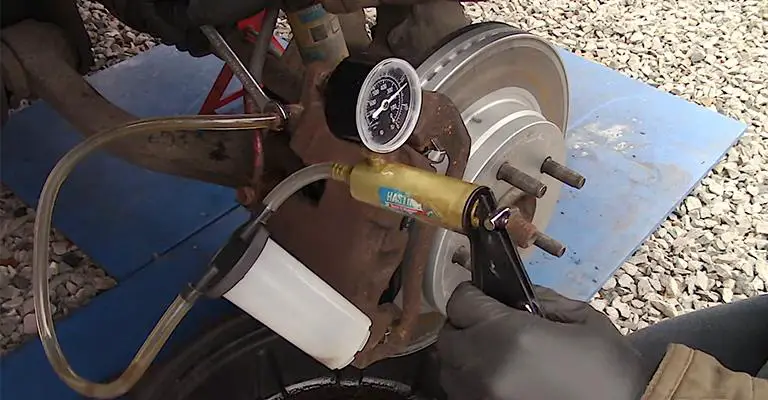
Starting with the cylinder farthest from the MC, fresh fluid is pumped into the bleed screws of the wheel cylinders or caliper cylinders. Make sure there are no more air bubbles in the MC reservoir after you have done this.
When the brake pedal is used to pump brake fluid from the reservoir to the wheel or caliper cylinders, air can run through the system and become trapped in high spots or the anti-lock/traction control pump.
A corroded MC bore will damage the “rubber” piston seals, allowing fluid to leak out and air to be absorbed by the fluid if the brake pedal is pushed beyond its usual travel.
Reusing brake fluid from the brake system is never a good idea. To achieve optimal results, only fluids from factory-sealed containers should be used for bleeding and filling. It is extremely hygroscopic (absorbs water) and is glycol ester-based in DOT 3, DOT 4, and DOT 5.1 brake fluids.
Caution
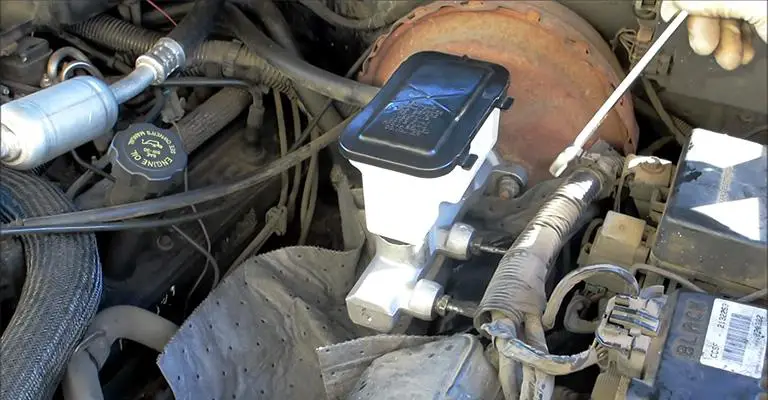
When the brake fluid is contaminated with water, it will corrode the very expensive parts of the brake system, especially the anti-lock/traction control pump unit. Keep brake fluid from being exposed to the air as much as possible.
As moisture-laden air will fill the container primarily after bleeding and filling, left-over brake fluid should be disposed of. The used fluid should be poured back into the can or bottle, closed tightly, and disposed of.
The liquid should not be poured on the ground (it will kill grass and vegetation for a very long time) or down the drain. The DOT 5 fluid is silicon-based and cannot be interchanged with DOT 3, DOT 4, or DOT 5.1 glycol ester fluids.
The hydraulic oil used in some European cars, particularly Citroens, is very similar to the hydraulic pump, jack oil, and automatic transmission fluids. Glycol ester fluids are incompatible with the specified fluid, causing seals to soften and eventually dissolve.
Why Is It Important To Bleed The Brakes?
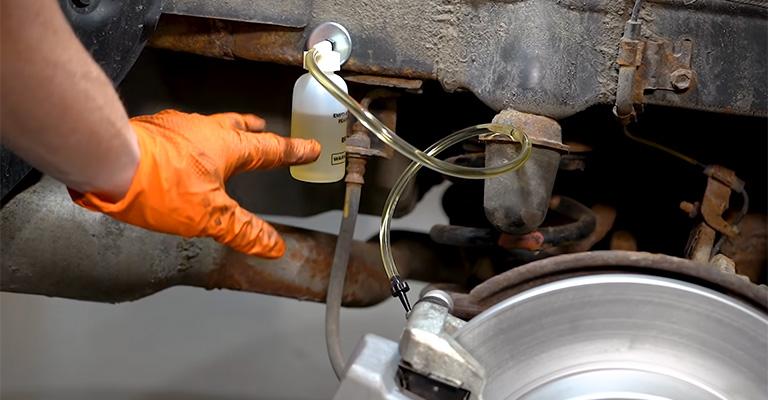
Bleeding the brakes involves pushing fluid through a hydraulic brake system to remove all air bubbles. Without bled brakes, air bubbles in the brake fluid can reduce hydraulic pressure, reducing brake performance. There is also the possibility of a spongy brake pedal.
The brake bleeding process can be broken down into two different scenarios. Bench bleeding the master cylinder is the first step in completing a complete brake conversion. When that is complete, and everything is installed, the remaining bleeding can be performed.
The first step is to bench-bleed the master cylinder. Why do this when you can bleed everything else? Some people wonder why this is necessary. Honestly, it is possible, but it takes a lot longer this way. Our goal is to make it as simple and painless as possible for you.
Similarly, to bleeding the rest of the brakes, bench bleeding a master cylinder involves bleeding a single component. Most of the air in the system is trapped within the master cylinder.
Consequently, bleeding the rest of the brake system will be much easier if all of the air is removed from the master cylinder before bleeding the rest. Ensure that the master cylinder is secured in a vice or other device to prevent it from moving during bench bleeding. You have two options at this point.
- In one method, hoses are run from the ports into the reservoirs, and a screwdriver is used to push the piston to remove air from the reservoirs.
- Alternatively, we recommend our Syringe Bleeder Kit. Syringe Bleeder Kits ensure a successful bleeding procedure by making the procedure fast, clean, and neat.
It’s easy to use our syringe bleeder kit. Here are the steps:
- The master cylinder should be bench mounted
- Your master cylinder should be plugged into both ports
- Approximately half of the brake fluid should be poured into the reservoir
- From the reservoir, fill the syringe with brake fluid
- Using the syringe, inject brake fluid slowly into one of the ports until all air bubbles have disappeared
- Repeat step 4 on the other port after plugging in the first one.
- Make sure your vehicle has a master cylinder installed!
After your master cylinder has been bled and installed in your vehicle, you can also bleed your combination valve and brake lines with your syringe bleeder kit.
Bleeding the Rest of the System
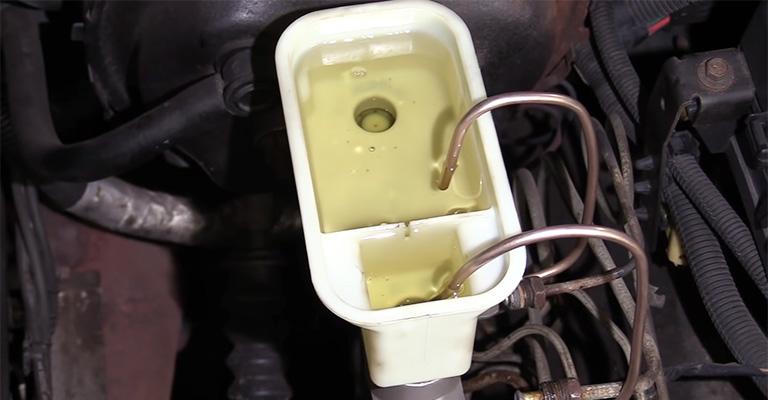
The rest of the brakes must be bled after the master cylinder has been bled and installed in the vehicle. Starting with the wheel farthest from the master cylinder and ending with the wheel closest to it, the bleeder valve is released, and brake fluid is pumped through the wheels.
Several supplies are needed for this procedure, including a quart-sized bottle, a clear rubber hose, and an assistant to push the brake pedal.
Bleeding your brakes is easy if you follow these steps:
- Determine the hex size of the bleeder screw on the wheel caliper.
- The rubber hose should be secured to the bleeder screw using the proper size hose.
- The other end of the hose should be placed in the brake fluid-filled quart bottle.
- While opening the bleeder, ensure your assistant slowly presses and holds the brake pedal.
- The hose will carry brake fluid. In addition to the brake pedal moving downward, air bubbles will be visible as fluid moves through the system.
- Release the brake pedal pressure and close the bleeder.
- It is important to repeat this process several times on the same wheel until no more air bubbles can be seen.
- You can continue this process with the remaining three wheels as well.
Signs That Your Brakes Need Bleeding
Brake fluid is usually bled by removing the reservoir cap and pumping the pedal several times in a specific manner. No further work is required after replacing the cap. Before bleeding your brakes, you may need to replace the old brake fluid in some situations.
- Your car pulls to the side of the road as soon as you stop. Bleeding your brakes can resolve this issue but getting a technician to check for any other issues that may be causing this problem is best.
- When you push your brakes, you hear an odd noise. If you hear hissing or squealing, an air bubble most likely exists in the reservoir-caliper line or in one of the lines between the calipers.
- Your brake fluid reservoir bubbles when you press the brake pedal. The presence of air bubbles in the reservoir indicates either a crack in the braking system or a damaged master cylinder piston which allowed air to enter the system. Pressure checks are necessary to remove these bubbles because they cannot be bled out.
- You have a low brake pedal. When you push down on the brake pedal, it takes more force to stop your car or truck. This may be caused by old, contaminated brake fluid. You should consult a professional before bleeding your brakes if your brake pedal is going low.
Final Words
Your brake fluid will become saturated with water if you don’t bleed them. As a result, the fluid’s boiling point will decrease, and eventually, it may boil and fail. Furthermore, rotors and calipers can rust if left unchecked.
If you change your brake fluid, does it need to be bled every time? There is a consensus that this is unnecessary, but it doesn’t hurt to do so. Since brake fluid typically lasts for several years, bleeding your brakes may be a good idea if you last changed it some time ago.
